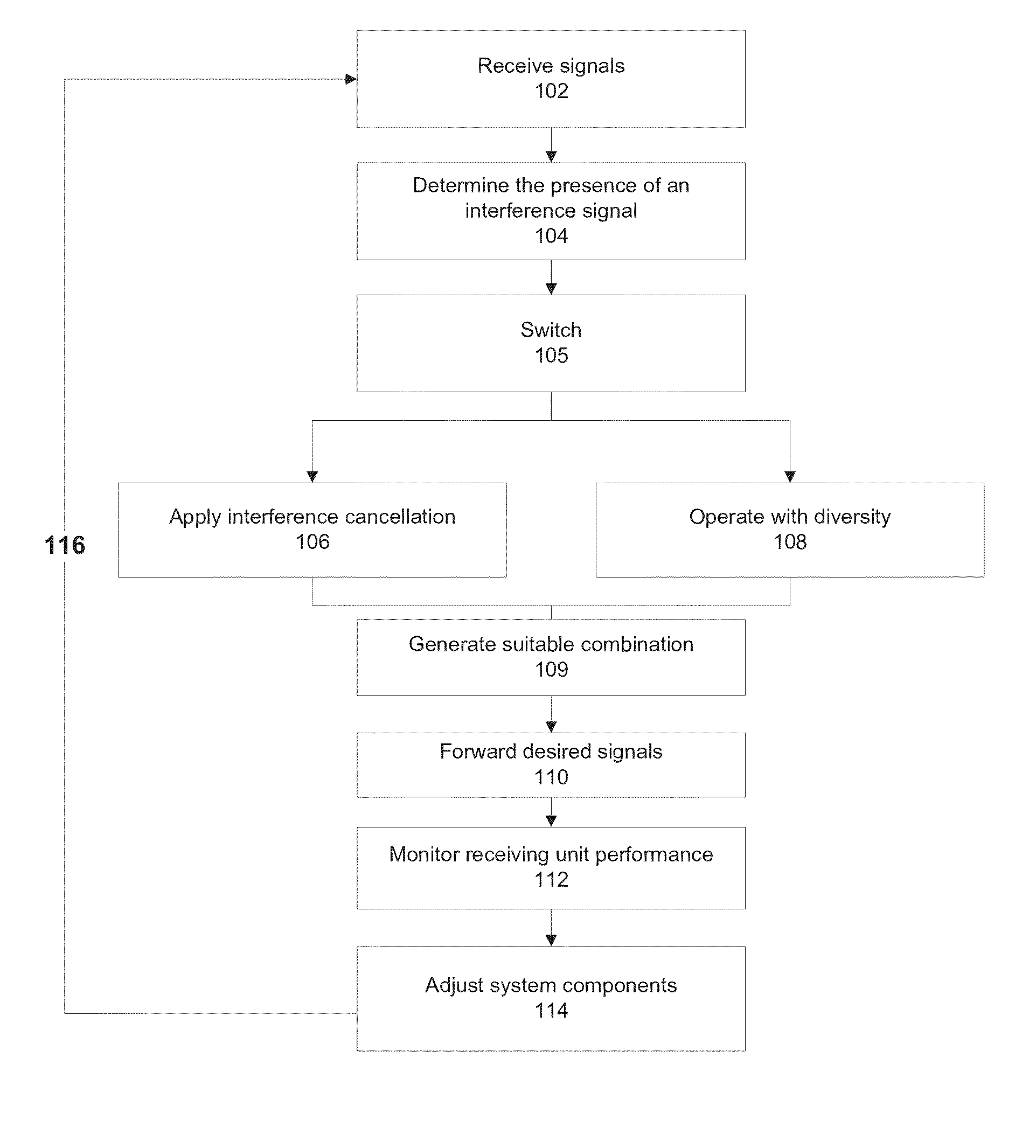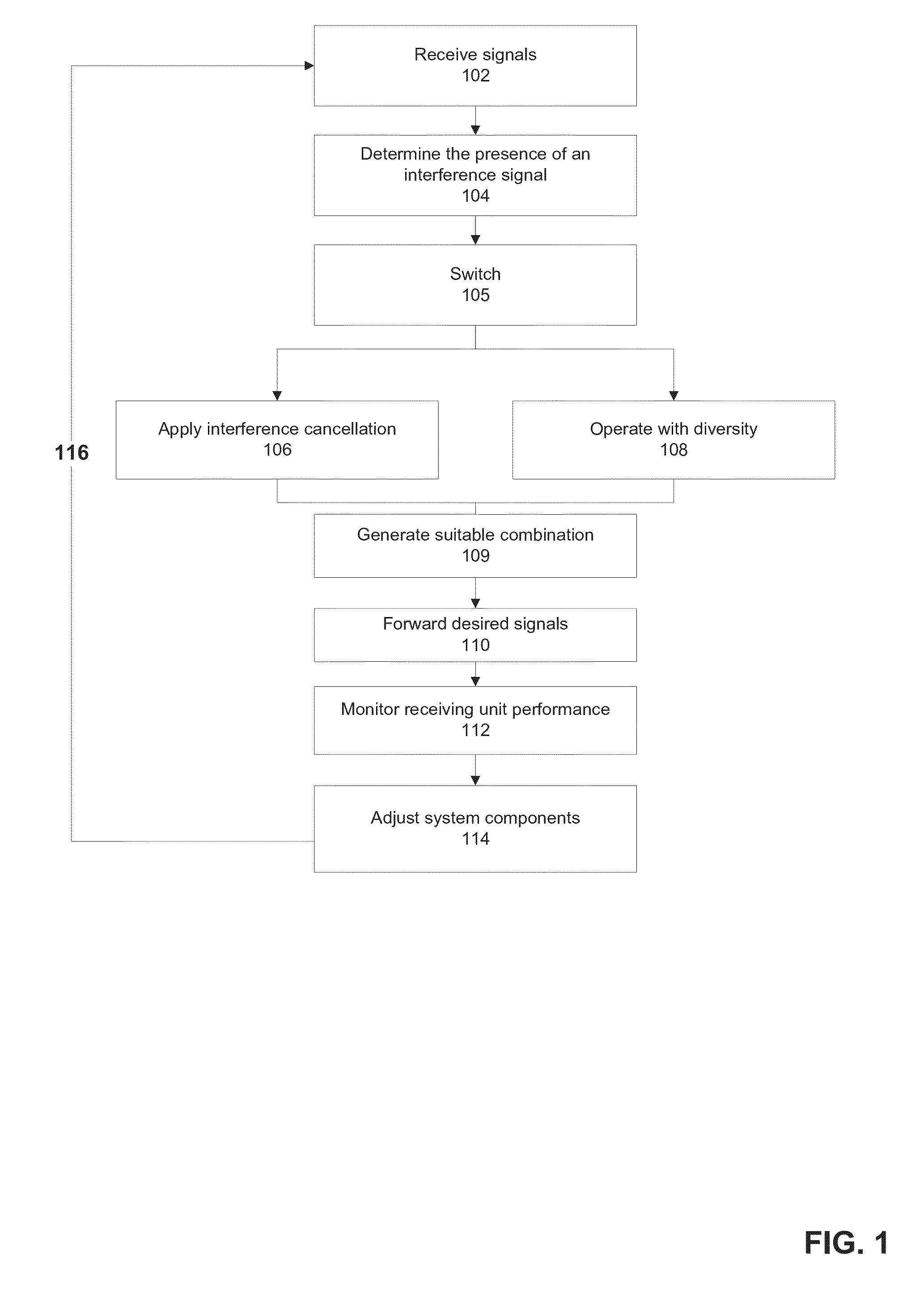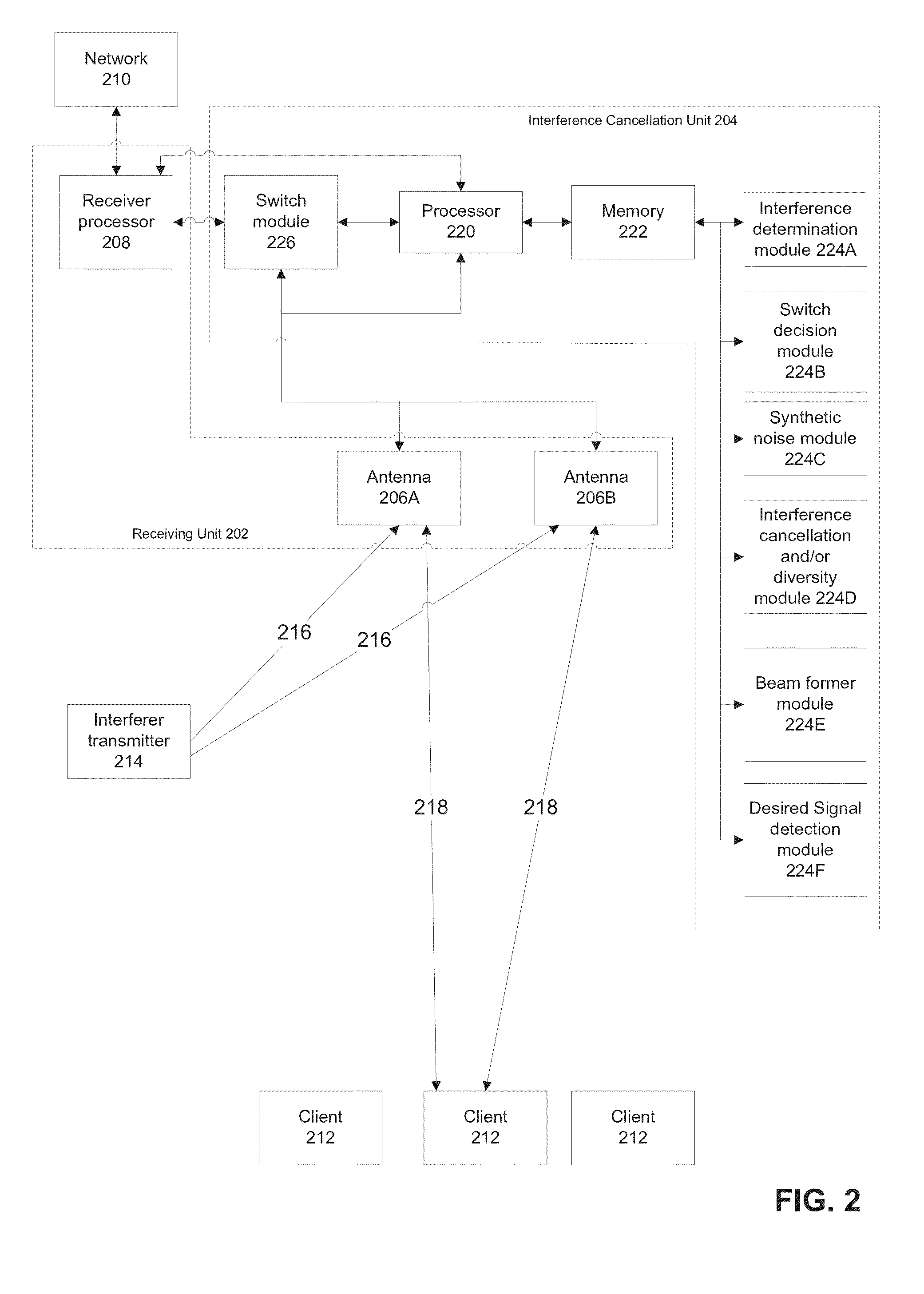Methods and systems for processing received signals for a wireless network receiver
a wireless network and receiver technology, applied in the field of data communication networks, can solve the problems of unwanted interference at the received spectrum, hampering uplink/downlink duplexing separation, and wireless communication network (e.g., cellular network) receivers being susceptible to interference from different sources, so as to reduce the impact of interference cancellation on the desired signal
- Summary
- Abstract
- Description
- Claims
- Application Information
AI Technical Summary
Benefits of technology
Problems solved by technology
Method used
Image
Examples
Embodiment Construction
[0105]The present invention, in some embodiments thereof, relates to data communication networks and, more particularly, but not exclusively, to systems and methods for cancellation of interference signals transmitted by interference transmitters.
[0106]As used herein, the phrase interference cancellation means removal and / or reduction of interference signals and / or other undesired signals from received signals. Desired signals may be isolated. Cancellation and / or removal may not be complete. Noise and / or the undesired signals may remain at a reduced level that allows for identification and / or detection of the desired signal. Sometimes as used herein, the presence of the interference signals means the presence of a dominant interference signal, and / or the absence of the interference signals means the absence of the dominant interference signal. The dominant interference signal may refer to a level of interference that requires cancellation, for example, the interference is not tolera...
PUM
 Login to View More
Login to View More Abstract
Description
Claims
Application Information
 Login to View More
Login to View More - R&D
- Intellectual Property
- Life Sciences
- Materials
- Tech Scout
- Unparalleled Data Quality
- Higher Quality Content
- 60% Fewer Hallucinations
Browse by: Latest US Patents, China's latest patents, Technical Efficacy Thesaurus, Application Domain, Technology Topic, Popular Technical Reports.
© 2025 PatSnap. All rights reserved.Legal|Privacy policy|Modern Slavery Act Transparency Statement|Sitemap|About US| Contact US: help@patsnap.com



